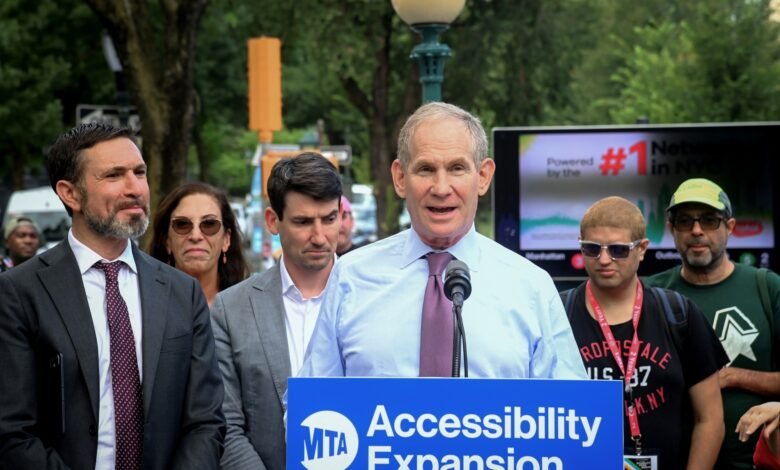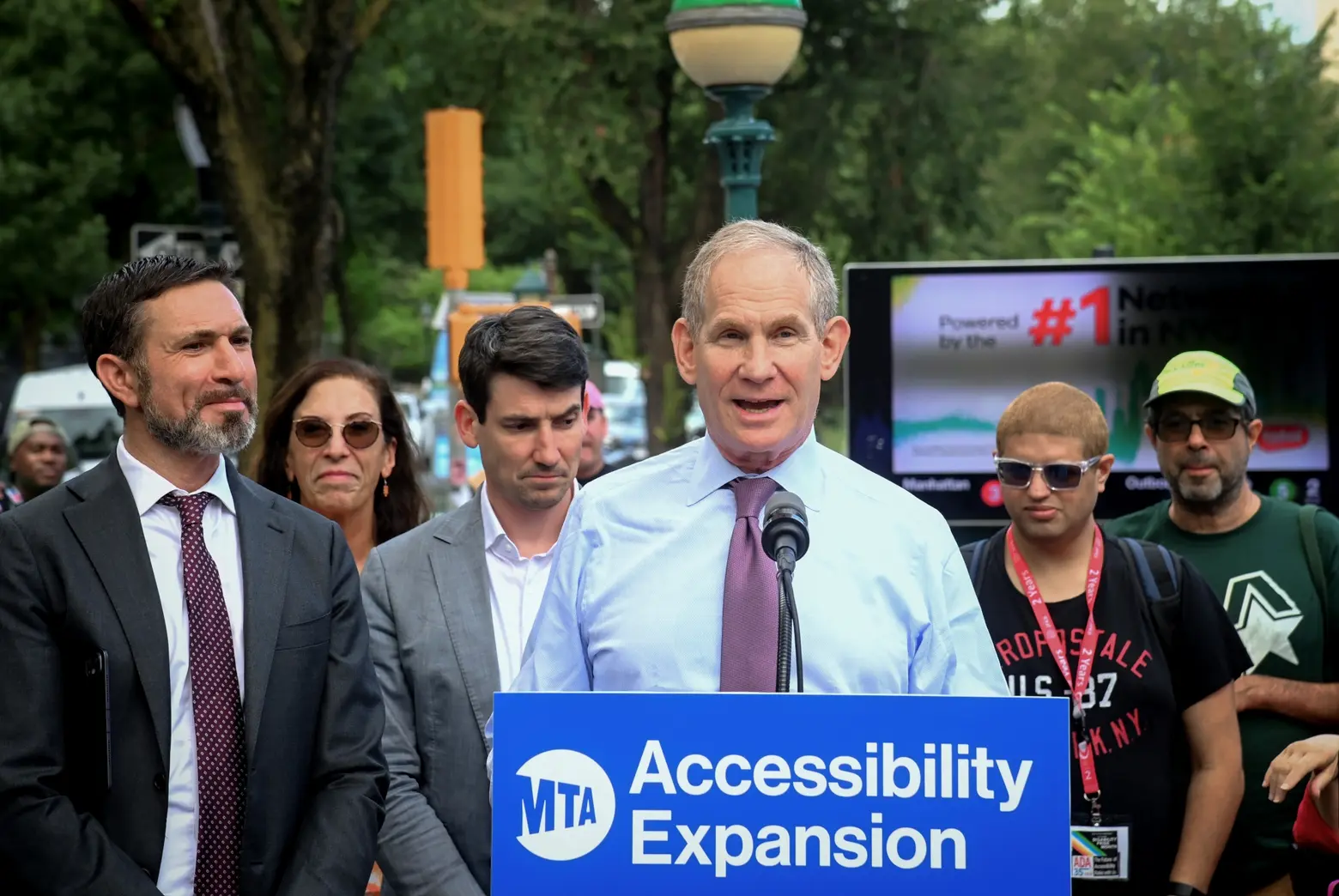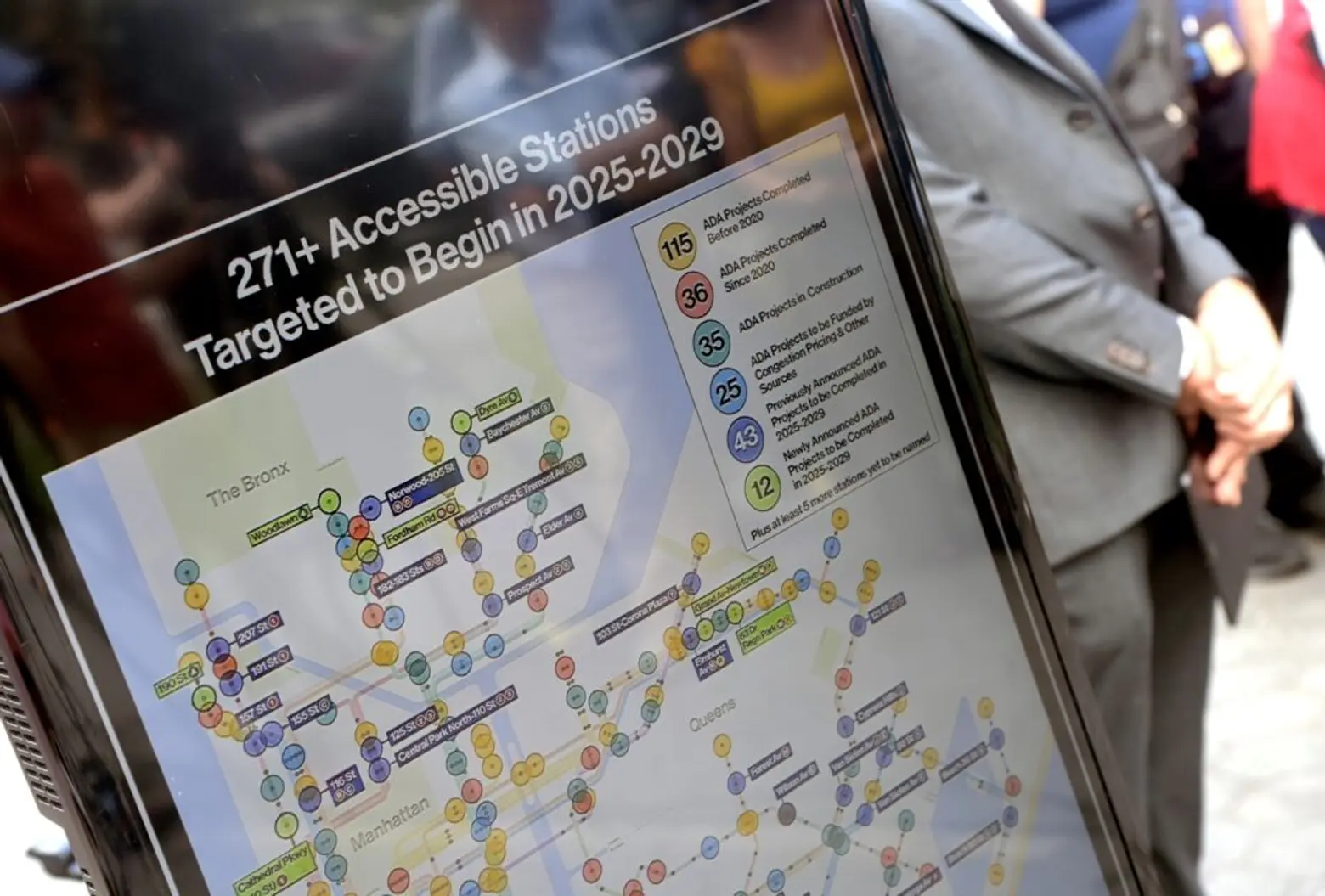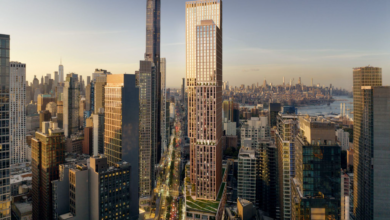12 more NYC subway stations to get accessibility upgrades


A dozen more New York City subway stations will receive accessibility upgrades under the Metropolitan Transportation Authority’s 2025-2029 capital plan. Announced Tuesday, upgrades include new elevators and other ADA-accessible features. The MTA says the new plan aims to make at least 60 percent more stations accessible and ensure that 70 percent of all subway trips begin or end at an accessible station. The accessibility projects are a result of a lawsuit settled by the MTA that required 95 percent of all stations to be accessible by 2055.

The stations were selected using “legislatively mandated” criteria, including geographic coverage, demographics, ridership, transfers, and priority destinations. For the first time, the agency also incorporated feedback from a public tool that allowed riders to share their accessibility priorities, garnering more than 2,000 responses across all five boroughs.
These upgrades add to the previous 43 stations that the MTA has committed to upgrading with elevators or ramps under their $68 billion 2025-2029 capital plan, approved in June. The plan also includes the replacement and modernization of 45 subway station elevators.
“When it comes to accessibility, the MTA is delivering much more than ever before—both in terms of dollars and number of ADA stations,” MTA Chair and CEO Janno Lieber said. “And thanks to our fully funded Capital Plan, we are going to keep moving forward at the same pace —five times faster than ever before—until we achieve full accessibility.”
Stations that are receiving accessibility upgrades include:
Brooklyn
- 53rd Street – R
- Bedford-Nostrand Avenues – G
- Botanic Garden – S
- Franklin Avenue-Medgar Evers College – 2, 3, 4, 5
- Grand Army Plaza – 2, 3
Queens
- 63rd Drive-Rego Park – M, R
- Grand Avenue-Newtown – M, R
Manhattan
- 190th Street – A
- Cathedral Parkway (110th Street) – 1
The Bronx
- Eastchester-Dyre Avenue – 5
- Fordham Road – B, D
- Woodlawn – 4
The MTA has also launched a revamped Elevator and Escalator Status tool, making it easier for riders to check the status of elevators and escalators system-wide. The updated platform features an improved user interface, better navigation and search capabilities, and a new option for users to save their favorite stations.
Revenue from congestion pricing is helping fund the MTA’s accessibility upgrades, including ADA upgrades at 23 stations with new elevators and rebuilt platforms. Since 2020, the agency has delivered 36 ADA-accessible stations—twice as many as it completed in the six years prior.
The city’s ongoing effort to improve subway accessibility addresses a longstanding issue. In June 2022, the MTA pledged to make 95 percent of all subway stations accessible by 2055 as part of a settlement in two class-action lawsuits challenging the system’s inaccessibility.
Under the agreement, the agency committed to making 81 stations accessible by 2025, another 85 by 2035, 90 more by 2045, and the final 90 by 2055.
As 6sqft previously reported, NYC’s transit system lags behind other U.S. cities in accessibility. Despite being the largest transit network in North America, only 27 percent of its 472 stations met ADA standards in 2023. To be considered ADA-accessible, stations must be navigable without climbing stairs for riders with a wide range of disabilities, according to the New York Times.
RELATED:
Interested in similar content?
Source link

